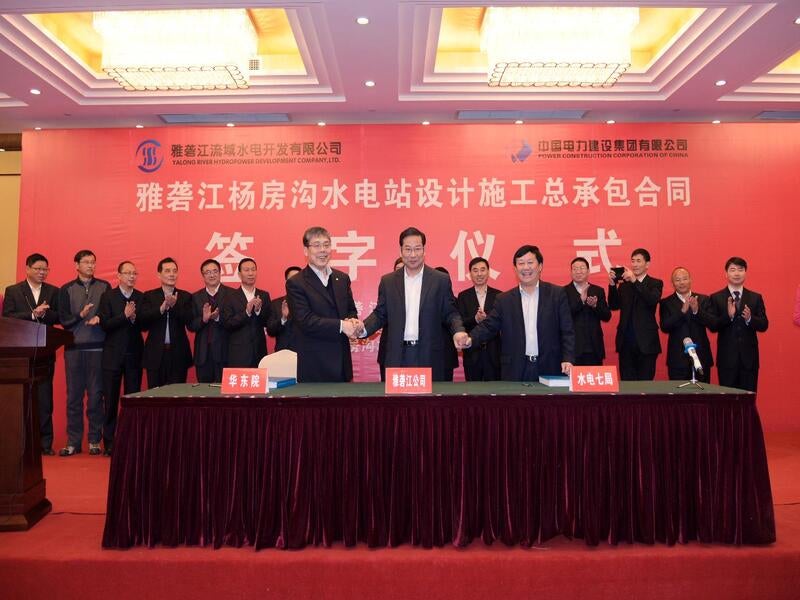The Yangfanggou hydropower project is a 1.5GW run-of-the-river hydroelectric facility under construction in the Sichuan province of China.
The project is being developed by Yalong River Basin Hydropower Development Company with a total estimated investment of £2.1bn ($3.26bn).
The construction works were started in July 2015, while the first generating unit is expected to be operational in July 2021 with the remaining three units scheduled for commissioning by 2024.
At full capacity, the Yangfanggou hydroelectric power station is estimated to generate up to 6.86 billion kWh of electricity a year.
Location and site details
The Yangfanggou hydropower project is located on the Yalong River, in the Muli Tibetan Autonomous County of the Liangshan Yi Autonomous Prefecture, Sichuan province, China.
The project site lies within the middle reaches of the Yalong River Basin, approximately 37km upstream of the Mengdigou hydropower station, and approximately 40km downstream of the Kara hydropower station.
Yangfanggou hydropower station make-up
The Yangfanggou hydropower project comprises a 155m-high, double-curvature arch dam along with flood discharge and energy dissipation structures, and an underground powerhouse.
The dam is divided into 17 sections, with the dam body featuring one ecological discharge hole, three flood discharge middle holes, and four flood discharge surface holes.
It creates a reservoir with a total storage capacity of 512.48 million cubic metres (mcm) at a normal storage level of 2,094m. The regulating storage capacity of the reservoir is approximately 53.85mcm.
The underground powerhouse will be equipped with four sets of 375MW Francis turbine generator units.
Construction details
Three 30t cable cranes are deployed to carry out the dismantling works as well as for concrete pouring and the transportation and installation of major equipment.
The project also involves the construction of a pilot tunnel, diversion tunnels, smoke-exhaust flat tunnel, tail adjustment and tail gate connection tunnel, water cushion pond traffic tunnel, tail gate construction support tunnels, main transformer exhaust tunnel, and auxiliary caverns.
It also involves the construction of on-site roads, access roads, sand and gravel processing system, a pre-explosive storage area, and a gas station.
Contractors involved
Second Sub-bureau of Hydropower was awarded a cable crane construction contract in May 2017.
Yalong River Basin Hydropower Development Company and China Electric Power Construction Company signed a general contract for the design and construction of the Yangfanggou hydropower project in January 2016.
The consortium of the Seventh Engineering Bureau of China Water Resources and Hydropower, and the East China Survey and Design Institute is responsible for the overall development of the hydropower project. The scope includes the technical co-ordination and the engineering and design management.
Yangtze River Water Resources and Hydropower Development Corporation has been engaged for the engineering construction supervision services for the project.
Shanghai Voith Hydro has been engaged for the supply of water-guide mechanism for the hydro-generator units.
Yangfanggou hydropower project background
The early preparatory works for the Yangfanggou hydropower project were started by the Yangfanggou Construction Management Bureau in December 2011.
While the environmental impact report of the hydropower station was approved by the Ministry of Environmental Protection in January 2014, the Sichuan Provincial Government and Reform Commission approved the project in June 2015.
The Yangfanggou hydropower station is estimated to offset approximately 2.3 million tonnes (Mt) of coal consumption and approximately 4.75Mt of CO2 and 34,000t of SO2 emissions annually.





